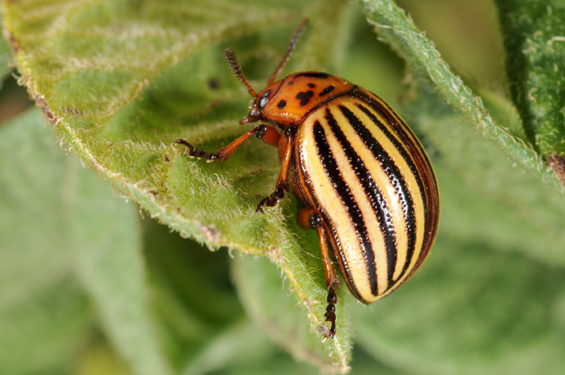
Common Name: Colorado potato beetle
Scientific Name: Coleoptera: Leptinotarsa decemlineata
Status: A pest of some vegetable crops, particularly potato
Damaging Stage: Larval
Biology: Colorado potato beetle larvae are red with two rows of black spots on each side. As they mature, they turn a salmon pink color. They are soft-bodied, slug-like and appear hump-backed. Adults are approximately � inch long with rounded outer wings marked with black and yellow stripes. The head is tan-orange with black markings.
Female beetles lay eggs in clusters of 10-30 on the undersides of leaves. After the eggs hatch, the larvae stay in these groups when young but start to move through the plant leaves as they age. There is one generation per year.
Injury: The larvae feed on potato foliage until fully grown. In addition to potato, they also feed on eggplant, tomato, pepper and others.
Action Threshold: Potato plants are able to tolerate approximately 30% defoliation in the earlier growth stages. However, once the tubers are beginning to bulk, they can only withstand about 10% defoliation. Generally, if adults are prevalent, control methods should be considered.
Management: Chemical controls are a necessity during a Colorado potato beetle infestation. However, these beetles develop resistance to insecticides extremely quickly so different chemicals should be rotated.
|